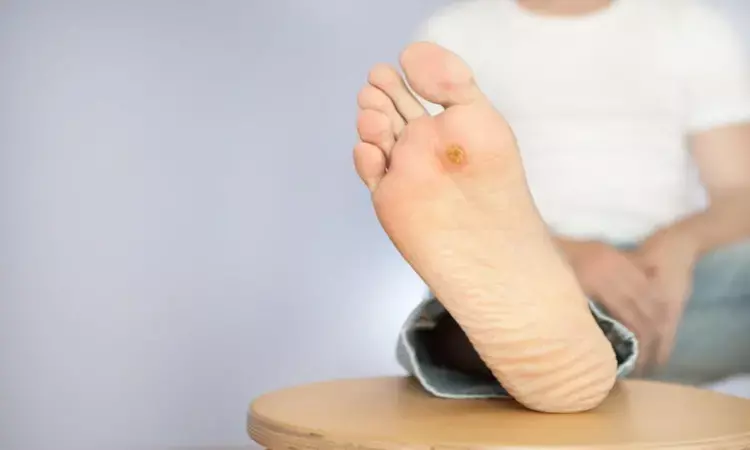- Home
- Medical news & Guidelines
- Anesthesiology
- Cardiology and CTVS
- Critical Care
- Dentistry
- Dermatology
- Diabetes and Endocrinology
- ENT
- Gastroenterology
- Medicine
- Nephrology
- Neurology
- Obstretics-Gynaecology
- Oncology
- Ophthalmology
- Orthopaedics
- Pediatrics-Neonatology
- Psychiatry
- Pulmonology
- Radiology
- Surgery
- Urology
- Laboratory Medicine
- Diet
- Nursing
- Paramedical
- Physiotherapy
- Health news
- Fact Check
- Bone Health Fact Check
- Brain Health Fact Check
- Cancer Related Fact Check
- Child Care Fact Check
- Dental and oral health fact check
- Diabetes and metabolic health fact check
- Diet and Nutrition Fact Check
- Eye and ENT Care Fact Check
- Fitness fact check
- Gut health fact check
- Heart health fact check
- Kidney health fact check
- Medical education fact check
- Men's health fact check
- Respiratory fact check
- Skin and hair care fact check
- Vaccine and Immunization fact check
- Women's health fact check
- AYUSH
- State News
- Andaman and Nicobar Islands
- Andhra Pradesh
- Arunachal Pradesh
- Assam
- Bihar
- Chandigarh
- Chattisgarh
- Dadra and Nagar Haveli
- Daman and Diu
- Delhi
- Goa
- Gujarat
- Haryana
- Himachal Pradesh
- Jammu & Kashmir
- Jharkhand
- Karnataka
- Kerala
- Ladakh
- Lakshadweep
- Madhya Pradesh
- Maharashtra
- Manipur
- Meghalaya
- Mizoram
- Nagaland
- Odisha
- Puducherry
- Punjab
- Rajasthan
- Sikkim
- Tamil Nadu
- Telangana
- Tripura
- Uttar Pradesh
- Uttrakhand
- West Bengal
- Medical Education
- Industry
Hypoalbuminemia tied to worse wound healing in patients with diabetic foot ulcers: Study

USA: Albumin is commonly measured in patients with diabetic foot ulcers to gauge wound healing capacity and metabolic status. Findings from a recent study published in the journal Wounds suggest that monthly changes from normoalbuminuria to hypoalbuminemia may predict worse wound healing.
"Thus, albumin use as a bioindicator of healing capability remains limited to below-normal values," the researchers wrote. "The ideal laboratory marker for malnutrition remains elusive and requires further examination."
Diabetic foot ulcers are a significant source of diabetes patients and are a major cause of leg amputations in the developed world. Among patients who undergo lower extremity amputation owing to DFU complications, the 5-year mortality rate is 56.6% for major amputation and 46.2% for minor amputation. Amputation is often required to prevent life-threatening infections.
Predicting DFU outcomes helps optimize management strategies. Various biomarkers, including HbA1C, Hb, albumin, erythrocyte sedimentation rate, C-reactive protein level, and WBC (white blood cell) count, have been shown to correlate with long-term outcomes in DFU patients, but there is a lack of literature examing the short-term predictive value of trends in these markers.
To address the knowledge gap, Lucian G. Vlad, Atrium Health Wake Forest Baptist, Winston-Salem, NC, and colleagues aimed to examine whether albumin values over a 12-week treatment course for diabetic foot ulcer correlated with ulcer size and outcomes.
The investigators hypothesized that lower albumin levels at presentation would correlate with worse outcomes at 12 treatment weeks. They also hypothesized that negative albumin level trends would correlate with worse healing (defined by increasing ulcer size) compared with stable or improving albumin level trends.
For this purpose, the researchers conducted a retrospective review of 793 patients who presented to the Atrium Health Wake Forest Baptist Wound Care and Hyperbaric Center between 2010 and 2022. Inclusion criteria were met by sixty-two patients. Over a 12-week treatment course, wound size data and albumin values were collected monthly.
The researchers reported the following findings:
- Initial albumin values were not significantly different between patients healed by 12 weeks compared with nonhealed patients.
- Healed proportion and average initial ulcer size in patients with at least 1 hypoalbuminemia value (<3.0 g/dL) were not significantly different from those in patients with normal albumin levels.
- Patients who trended from normoalbuminemia to hypoalbuminemia displayed significantly increased wound sizes compared to patients with albumin changes within the normal range (0.04 cm² and -1.17 cm², respectively).
- Monthly changes in albumin correlated poorly with wound healing (r = 0.144), and large negative albumin trends (>0.5 g/dL per month) did not correlate with increased wound sizes compared with stable or positive trends.
"The utility of albumin as a bioindicator of short-term healing capability is limited to below-normal values," the researchers concluded.
Reference:
Vlad LG, Grosser JA, Dodenhoff KA, Peoples AE, Aguilo-Seara G, Molnar JA. Examining albumin as a bioindicator of healing capability in patients with diabetic foot ulcers: a retrospective review. Wounds. 2023 Jun;35(6):E193-E196. doi: 10.25270/wnds/23012. PMID: 37347595.
Dr Kamal Kant Kohli-MBBS, DTCD- a chest specialist with more than 30 years of practice and a flair for writing clinical articles, Dr Kamal Kant Kohli joined Medical Dialogues as a Chief Editor of Medical News. Besides writing articles, as an editor, he proofreads and verifies all the medical content published on Medical Dialogues including those coming from journals, studies,medical conferences,guidelines etc. Email: drkohli@medicaldialogues.in. Contact no. 011-43720751


